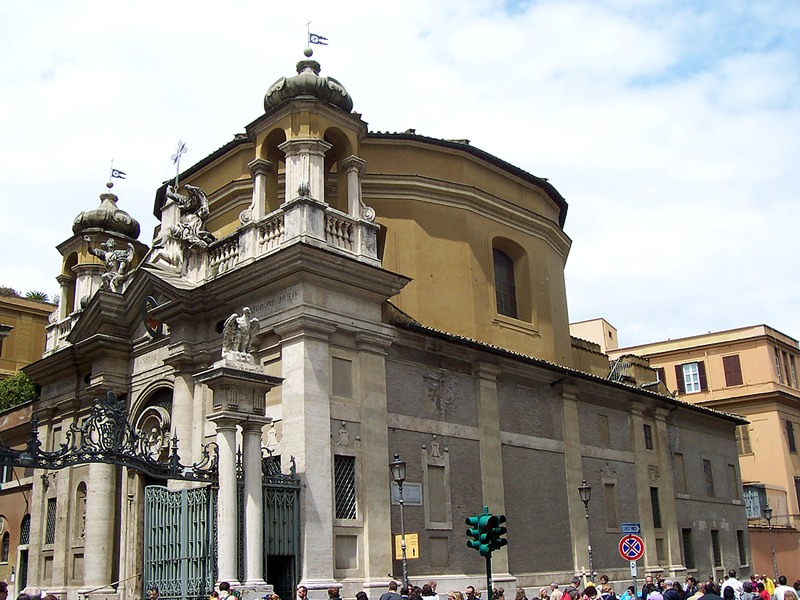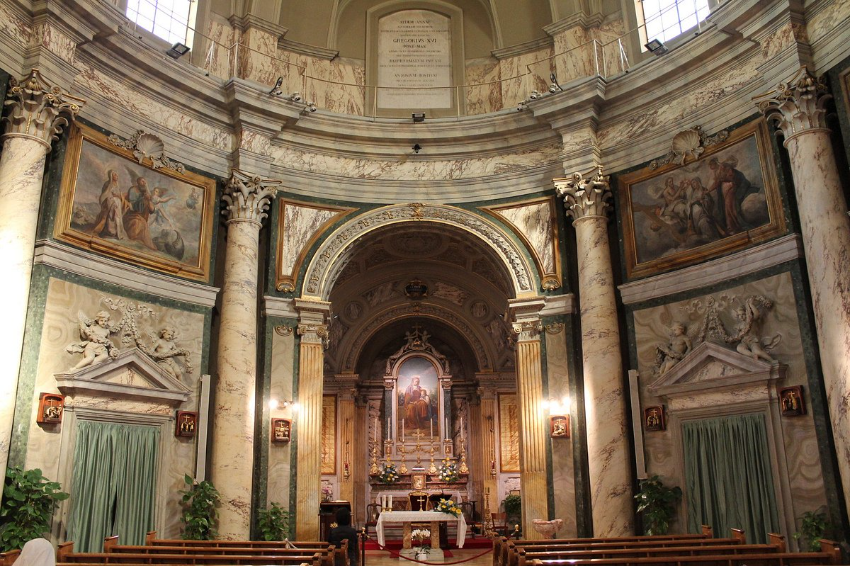Vignola - Sant'Anna dei Palafrenieri
elongated central plan
During the 15th century renaissance central plans were very pompular. Mid 16th century Jacopo Barozzi da Vignola (1507-1573) introduced a new interpretation by elongating the central space. He and his followers were the first to design and build churches with oval plans.
During the counter reformation a lot of new religious congregations were founded. As abbeys in the middle ages gave a boost to the roman style and Bourgundy in France became a lab for religious art, Rome became a lab for religious architecture in 16th and 17th century.
first realisations
For the Gesu church in Rome Vignola first designed a church with an oval plan, but eventually it was rejected and the Gesu church was realised with a classic rectangular nave and a circular dome.
At the border of the Vatican and the city of Rome Vignola could realise the first oval church: Sant'Anna dei Palafrenieri for the fraternity of the papal grooms'. The works began in 1572, one year before Vignola's death and was finished by his son.
Briefly afte this Francesco Capriani da Volterra (1535–1594), a pupil of Vignola, designed the second oval church in Rome: San Giacomo degli Incurabili.
Sylvie Duvernoy writes that every church is different, but at the same time a variation on the same principles.
You can describe anu oval by the ratio of its axes and the place of its centers. Hereby more schemes were used than described by Serlio.
For example Vignola designed Sant'Anna dei Palafrenieri starting from Pythagorian 3-4-5-triangles, while Capriano used equilateral triangles (= Serlio 4).

